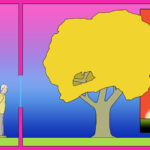Society’s view of substance use changes.
When first produced, Coca-Cola contained caffeine and cocaine. Maia Szalavitz writes in Undoing Drugs, “The penalty for coffee possession under the reign of Sultan Murad the IV of the Ottoman Empire in the 17th century was beheading.” Public over-consumption of ethyl alcohol, a known neurotoxin, is celebrated in America’s tailgating culture. The frequency of physical assaults, sexual assaults, arrests, and hospitalizations associated with tailgating does not diminish ethyl alcohol’s popularity or legality. In the U.S., in 2021, 500 deaths per day were due to alcohol.
Abstinence from substances is a current social construct. Humans have used substances for over 12,000 years. Currently, between 70-80% of people use substances without issue. Nearly 99% of Americans use some combination of the legal, experience-altering substances alcohol, nicotine, and caffeine.
Drugs – substances – don’t cause addiction. If drugs caused addiction, since 99% of us in the U.S. use substances, we would all have addiction. Addiction, at essence, is defined as a learned behavior that achieves desired ends but persists despite negative consequences. Babies can’t be “born addicted” because they haven’t learned anything yet and don’t have the developmental brain capacity to know what they desire or how to get it.
People use substances for reasons that are meaningful to them.
If people decide they wish to reduce use of a substance, logic suggests that if they discover the reasons for use, and help themselves with those reasons, use will be reduced. Risk-informed skilled use and/or abstinence may be options.
“Drugs are not good or bad. They are simply morally neutral tools which can help or hurt, depending on context. Even the most stigmatized drugs can be helpful or even lifesaving – just ask chronic pain patients who rely on opioids, or people with ADHD who take stimulant medications. Dismissing certain drugs as ‘all bad’ or ‘all good’ ignores the complexity of reality as well as the importance of context.”
– M. L. Lanzillotta
Substance use can be problematic when overuse persists despite the individual’s volition and/or experience of negative consequences, including relational, parenting, school, work, and/or legal problems.
If people wish to reduce use of substances and find this difficult, brain automaticity may be a factor. “Automaticity” is a facet of the human brain allowing it to learn to act without thinking, e.g. automatically putting on the car’s brakes when a child’s ball rolls into the street. Brain structures and functions involved with bonding, attaching, relating and loving may also be involved.
Logic suggests that, with research-informed medical care to ease conditions that may be causing stress to one’s physical and/or emotional well-being, self-kindness, awareness, and practice, brain automaticity may be transformed into conscious choice. Periods of risk-informed, skilled use and/or abstinence become possible.
Crucial exceptions to this logic include untreated trauma, untreated mental illness, inadequately treated physical pain, and/or overuse of opioids. Research-informed medical care, including medications, and research-backed, cognitive behavior therapy-based counseling protocols are usually needed for these conditions.
When opioids are used in large amounts, intermittently, over time, irreversible brain changes may occur. Withdrawal is agony. The treatment for this medical condition is medication. The only treatments known to cut death rates from opioid use disorder by half or more are the medications methadone and buprenorphine. Denying people with opioid use disorder medications can cause their deaths.
Other than “addiction,” these terms were purposely not used in the above text: addict, alcoholic, substance abuse, substance use disorder, drug abuse, alcohol abuse, disease, willpower, sober, clean. These terms and others related to substance use are used in stigmatizing, inaccurate, often dangerous ways. A comprehensive list is here.
“A life worth living – in which you feel deeply connected to others, have the tools you need to manage distress and have a strong sense of purpose – is the best defense against addiction.”
– Maia Szalavitz
Much of this content has been co-created with clients and community members. I am deeply grateful to them for their bravery, insights, and determination. Their generosity and humanity in finding their own insights, helping me create these materials, and their permission to share their wisdom is boundless.
Questions to Ask and Answer to Reduce or Eliminate Substance Use
Guide to Requesting Research-Informed Care
Guide to Requesting Medical Care for Substance Use Concerns
Help That Helps: A Kind, Research-Informed, Field-Tested Guide for People with Substance Use Concerns, by Anne Giles, M.A., M.S., L.P.C. and Sanjay Kishore, M.D., July 2019
Help that Helps is a self-guided program for people with substance use challenges to use in tandem with medical care. Self-help is not an evidence-based treatment for substance use disorder.
Here’s an overview and introduction to Help That Helps.
Additional posts:
- If You Have Begun to Drink and Use More Than You Wish
- Insider’s Guide to Early Abstinence
- I Am a Person with the Health Condition of Addiction
- A Typical Day in the Life of a Person Practicing Evidence-Based Treatment for Addiction
For people with loved ones with substance use concerns:
- Suggestions for Parents and Partners
- How to Help a Loved One with Addiction: An Evidence-Informed Approach
- How to Help People With Addiction Who Are Mandated to Abstinence
- What Sciences Says to Do If Your Loved One Has an Opioid Addiction, Maia Szalavitz
The most thoroughly-researched writing on substance use is done by neuroscience journalist, Maia Szalavitz. Recommended reading by Maia Szalavitz includes Unbroken Brain: A Revolutionary New Way of Understanding Addiction, 2016, Undoing Drugs: The Untold Story of Harm Reduction and the Future of Addiction, 2021, and her articles.
In this 19-minute interview on 2/6/22, Maia Szalavitz states succinctly the science of substance use and addiction. Maia Szalavitz engaged in workshops and community conversations in Blacksburg, Virginia in August, 2016.
. . . . .
Most supplements to Help That Helps have been grouped and organized here:
Additional Awareness Skills
- Attention > Awareness of Feelings and Thoughts > Inner Wisdom
- Awareness + Action + Kindness Worksheet
- Abstinence Solitaire Explanation | Fact Deck | Action Deck (added 10/23/19)
- How to Help Myself with Feeling Flooded
- I Can Give Myself and Others a Better Time (added 8/2/19)
- How Else Can I Help Myself Meet My Needs, Wants, and Preferences? (added 9/4/19)
- A Kind, Cost-Benefit Analysis (added 9/6/19)
- Working multiple awareness skills at once to achieve remission efficiently (added 11/25/19)
- Self-Soothing (added 12/6/19)
. . . .
I am attempting to distill research, work collaboratively with clients, and derive a manualized, brief protocol to assist people in achieving remission from substance use disorders. I am hoping researchers will be interested in our case study outcome data and begin to design research trials to test the protocol’s efficacy.
If you’re interested in learning about our process, here’s what I’ve published online so far:
- Derivation of a Counseling Protocol for Problematic Substance Use
- The Context for Learning and Implementing Awareness Skills
- Awareness Skills Curriculum: Session Outlines
- Overview and summary of Awareness Skills (added 2/11/22)
This content is for informational purposes only and is not a substitute for medical or professional advice. Consult a qualified health care professional for personalized medical and professional advice.
Last updated 3/1/2024

